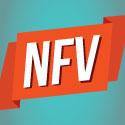OPNFV Does Telecom/Open Source 'Mind Meld'
This time, it's not something out of Star Trek – it's the real-world challenge of melding two realms together on the fly.
November 24, 2014

The new OPNFV organization is melding the telecom standards world with the open source realm in its own unique way, all the while trying to focus on developing practical use cases and functional code that address "where the rubber really meets the road" in NFV, says its president, AT&T's Margaret Chiosi.
The Open Platform for NFV Project Inc. is growing rapidly -- ZTE joined just last week and more new members will be announced in December -- while trying to meet an aggressive schedule of new software releases every six months, beginning in the first half of 2015. (See Open NFV Group Uncloaks Its Platform Plan and Will Carriers Step Up to Open Challenge?)
"This organization is becoming the 'meet-me' point to talk about common issues and common detailed use cases," Chiosi tells Light Reading, in an interview following the ZTE announcement. "We are really excited -- pleasantly surprised really, at the breadth of vendors getting involved."
The group will issue its first release most likely by May, but hasn't yet decided exactly what will be included from among a large number of proposals, Chiosi says. The group's charter is to focus on the NFV-I (NFV infrastructure) and the virtualized infrastructure manager (VIM), and it is trying to dig deeper into implementation details than the original NFV group -- the European Telecommunications Standards Institute (ETSI) NFV Industry Specifications Group -- was chartered to do.
"There is the vision and aspiration of creating the platform and there is the reality of where the industry is," comments Chiosi, who has been part of the NFV effort from day one. "We are trying to have an every-six-month cadence where we deliver code or detailed recommendations for performance improvements -- what we would need, and when and how -- for NFV to work."
But she admits the goal isn't an easy one, especially with significant downtime looming for the holidays, and the need for the OPNFV to bring together diverse participants from diverse companies, including standards folks, network architects, software developers and coders.
The ongoing developments and discussions related to NFV orchestration can be found in Light Reading's OSS section
The group's process at this point is straddling a traditional telecom standards group and an open source group, Chiosi says. Where telecom standards groups are accustomed to conference calls and white papers, open source groups more typically use Internet Relay Chat (IRC), which is something like instant messaging, to maintain a constant conversation which can then be transcribed and shared.
"We have this tension between the two groups," Chiosi says, although she's laughing about it. "So we're doing both, for now."
Ultimately the group will be focused almost exclusively on software code, but it's not at that point yet. Among the challenges that loom immediately is creating the OpenStack build structure so the open source cloud software initiative can be used appropriately for OPNFV's tasks.
"Right now, everything is a bunch of code... you have to download it, build it and compile it -- there is no common build structure," Chiosi explains. "You have to build an image to use it. That is one of the challenges -- the industry is not as ready-to-go as some people might hope."
It will be up to OPNFV to determine the build structure and the tools to do the build and to identify the bugs and feature gaps that must be filled.
The group is already fielding a number of project proposals and working to determine which will be included in the first release -- a decision that could be heavily influenced by what is realistic to finish by then, Chiosi says.
"We're taking baby steps," Chiosi comments. But the AT&T exec is also determined that the OPNFV remains focused on the practical issues surrounding NFV deployment, and says the aggressive release schedule "will keep us from floating off to never-never land."
— Carol Wilson, Editor-at-Large, Light Reading
You May Also Like










